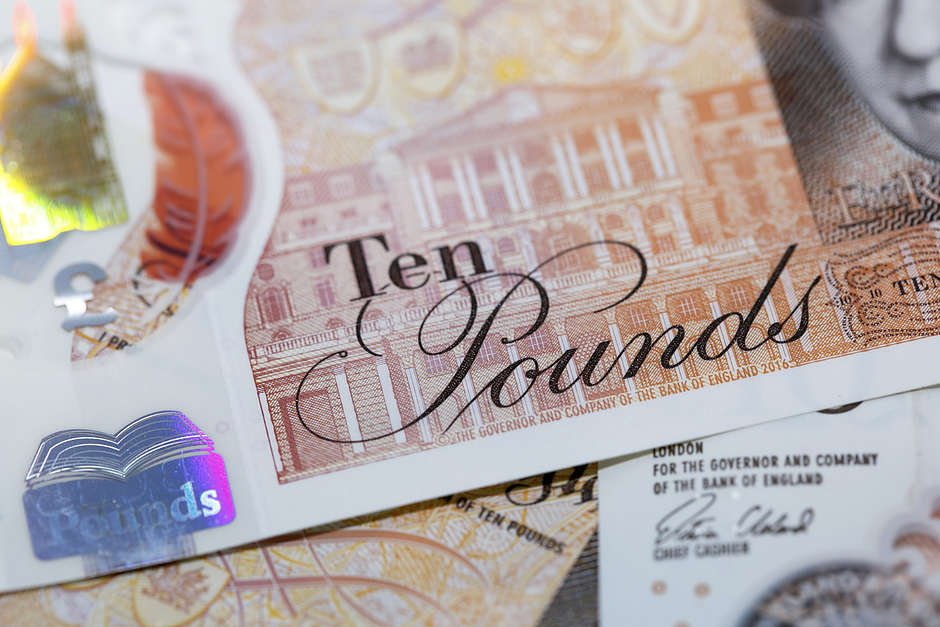Pound Sterling retreats ahead of key inflation data
- Pound Sterling stays under modest bearish pressure even though investors remain sidelined ahead of inflation data.
- United Kingdom’s inflation is expected to soften slowly as labor market conditions are extremely tight.
- The Bank of England is expected to raise interest rates further to sharpen its quantitative tools against stubborn inflation.

The Pound Sterling (GBP) is correcting lower on Monday and trading at around 1.2800 after showing a big bullish performance last week, rallying to levels not seen since April 2022, near 1.2850. Investors are keeping an eye on the United Kingdom’s key inflation data, to be released on Wednesday at 6 GMT. The GBP/USD pair is showing a severe contraction in volatility to start the week, ahead of the release of key price indicators, which will provide guidance about the interest rate policy from the Bank of England (BoE).
Tight labor market conditions and higher food prices in the United Kingdom have remained major catalysts that have been keeping inflationary pressures elevated. More interest rate hikes by the UK central bank are widely expected as inflation has not shown yet evidence of coming down.
Daily digest market movers: Pound Sterling retreats from annual highs
- Less volatile action is reported by the Pound Sterling as investors are awaiting the release of the UK Consumer Price Index (CPI) data.
- UK’s monthly headline inflation (May) is expected to show a pace of 0.4%, slower than the pace of 1.2% registered in April.
- Annualized headline CPI is seen softening to 8.5% vs. the prior release of 8.7% while core inflation that excludes oil and food prices is seen steady at 6.8%.
- UK’s food price inflation is hovering near a 45-year high at 19% which is keeping inflationary pressures at higher levels.
- The event of Brexit and the execution of early retirement by individuals have resulted in shortages of labor.
- British firms are offsetting labor shortages by offering higher wages, which have increased households’ demand for core goods and services.
- Reuters reported that the BoE looks set to raise interest rates by a quarter point to a 15-year high of 4.75% on June 22.
- For the interest rate guidance, a poll from Reuters indicates that UK’s interest rates will peak around 6% this year.
- BoE Governor Andrew Bailey has already confirmed that inflation is extremely persistent and will take more time to return to the desired rate than expected earlier.
- UK Finance Minister Jeremy Hunt has ruled out giving any direct fiscal support to households struggling with soaring mortgage costs, as reported by Financial Times. Fiscal support to individuals might fuel the price index and force the central banks to elevate interest rates further.
- IMF expects that the UK will avoid recession this year and has upgraded its economic growth forecast to 0.4%. Earlier, it was expecting a contraction of 0.3%.
- The US Dollar Index (DXY) is inside the woods as investors are having mixed responses about Federal Reserve’s (Fed) policy guidance.
- As per the CME Fedwatch tool, investors are expecting that Fed chair Jerome Powell will hike interest rates just once this year.
- Richmond Fed Bank President Thomas Barkin has commented that raising rates further could create the risk of a more significant slowdown in the economy. It will be comfortable doing more on interest rates if coming data doesn't confirm a story that slowing demand is returning inflation to the 2% target."
- Chicago Fed President Austan Goolsebee commented that there is conflicting data on whether we are too hot or whether we have done enough.
- The United States Consumer Sentiment Index has improved to 63.6 as a soft consumer and producer inflationary pressures have infused optimism among the market participants.
Technical Analysis: Pound Sterling tries to find support near 1.2800
The Pound Sterling is looking to stabilize after printing a fresh 13-month high at 1.2848. The Cable is showing a lackluster performance but is expected to continue its four-day winning streak as the USD Index is facing pressure due to a shift in sentiment about Fed’s interest rate guidance. Horizontal support is plotted from 26 May 2022 high at 1.2667, which will act as a cushion for the Pound Sterling.
Sentiment for the GBP/USD pair will get more bullish if it manages to climb above a 1.2848. The Pound Sterling could lose its strength if the Cable drop below June’s low around 1.2370.
Pound Sterling FAQs
What is the Pound Sterling?
The Pound Sterling (GBP) is the oldest currency in the world (886 AD) and the official currency of the United Kingdom. It is the fourth most traded unit for foreign exchange (FX) in the world, accounting for 12% of all transactions, averaging $630 billion a day, according to 2022 data.
Its key trading pairs are GBP/USD, aka ‘Cable’, which accounts for 11% of FX, GBP/JPY, or the ‘Dragon’ as it is known by traders (3%), and EUR/GBP (2%). The Pound Sterling is issued by the Bank of England (BoE).
How do the decisions of the Bank of England impact on the Pound Sterling?
The single most important factor influencing the value of the Pound Sterling is monetary policy decided by the Bank of England. The BoE bases its decisions on whether it has achieved its primary goal of “price stability” – a steady inflation rate of around 2%. Its primary tool for achieving this is the adjustment of interest rates.
When inflation is too high, the BoE will try to rein it in by raising interest rates, making it more expensive for people and businesses to access credit. This is generally positive for GBP, as higher interest rates make the UK a more attractive place for global investors to park their money.
When inflation falls too low it is a sign economic growth is slowing. In this scenario, the BoE will consider lowering interest rates to cheapen credit so businesses will borrow more to invest in growth-generating projects.
How does economic data influence the value of the Pound?
Data releases gauge the health of the economy and can impact the value of the Pound Sterling. Indicators such as GDP, Manufacturing and Services PMIs, and employment can all influence the direction of the GBP.
A strong economy is good for Sterling. Not only does it attract more foreign investment but it may encourage the BoE to put up interest rates, which will directly strengthen GBP. Otherwise, if economic data is weak, the Pound Sterling is likely to fall.
How does the Trade Balance impact the Pound?
Another significant data release for the Pound Sterling is the Trade Balance. This indicator measures the difference between what a country earns from its exports and what it spends on imports over a given period.
If a country produces highly sought-after exports, its currency will benefit purely from the extra demand created from foreign buyers seeking to purchase these goods. Therefore, a positive net Trade Balance strengthens a currency and vice versa for a negative balance.
Author

Sagar Dua
FXStreet
Sagar Dua is associated with the financial markets from his college days. Along with pursuing post-graduation in Commerce in 2014, he started his markets training with chart analysis.

















